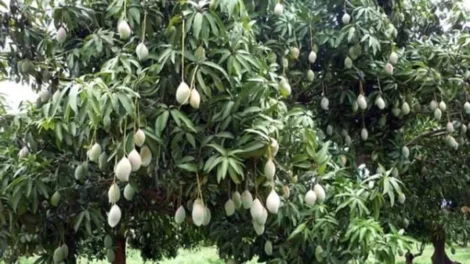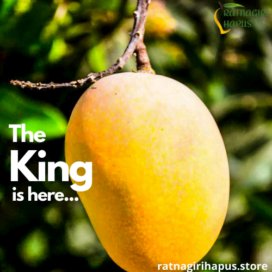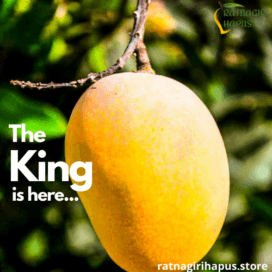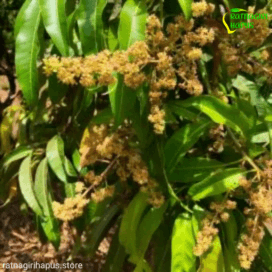Alphonso Mango

This blog is related to Alphonso mango, we hope you will like it and please do like share and subscribe to our newsletter so we can write such blogs and bring more information related to alphonso mango to you guys…enjoy reading……The mango is a tropical stone fruit. This is a type of plant food with a fleshy outer section that surrounds a shell, or pit. This pit contains a seed. There are many different kinds of mango.
Alphonso Mango
Indian Hapus (Alphonso) came into existence as a gift from a Portuguese general and military expert- Afonso de Albuquerque. When the Portuguese people colonized India, they carried Mango fruit along. Portuguese was responsible for introducing grafting on mango trees to produce extraordinary and incredible varieties like the Alphonso during the visit to India. That’s how they introduced us to the Hapus mango, which is an outcome of a hybrid plant. It was the Portuguese who introduced grafting on mango trees to produce extraordinary varieties like Alphonso
Alphonso mango is the best variety of mangoes in India. It is mainly found in Ratnagiri of Karnataka, Ratnagiri is home to the alphonso mango. there are several different varieties of Alphonso. Most of the two common Hapus Mangoes are Devgad hapus (Alphonso Mango)and Ratnagiri hapus (Alphonso Mango). These mango varieties are the most expensive but one of the best in terms of sweetness, richness, and flavour.

Ratnagiri Alphonso Mango
Mangoes from Ratnagiri are commonly known as Ratnagiri Hapus. Mangoes from the Coastal area of Ratnagiri with Golden yellow tint & red tinge, nonfibrous juicy pulp.
Alphonso mangoes offer excellent flavour, high freshness, and a yummy taste that is mouth-watering. There is no use of pesticides, insecticides, pre-fulling, and ripening treatment for these mangoes. There is no application of culture and ethylene gas. The peeling of Alphonso is very easy and can be easily peeled just like a banana. Unlike other breeds of mangoes, Alphonso Mangoes does not have any fibre contents.
Buy Ratnagiri alphonso mango online
Seasons in India begin at the end of March and last until it becomes rainy during the monsoon season near the first week of June or May’s end. We source Ratnagiri Hapus directly from our selected GI-certified group of farmers in Ratnagiri district, Maharashtra. Our farmers, who are well trained, follow standard operating procedures on our farms. Which are sourced from Carbide and chemical-free now buy Ratnagiri Alphonso Mangoes online.
How to Cut Ratnagiri Alphonso Mango
Devgad Alphonso Mango
Devgad Alphonso Mango cultivar is located near the Arabian Sea coast guarding mountains rich with minerals, Laterite stones, and fresh sea breeze flowing from the Arabian Sea. It is filled with multiple minerals in the land with a hilly tropical area on one side and the Sea. Mango is grown in Devgad with Saffron & Yellow colour gradients, sweet & fascinating taste Devgad Hapus has a Stronger and thicker outer coat. Devgad Hapus has a Pleasant fruity smell and have no fibre present. It has a very sweet taste and is very popular among people. Having wrinkles or the mango shrivelling when ripe doesn’t take anything away from its incredible taste.
Alphonso mango blog
Buy Devgad alphonso mango online
Seasons in India begin at the end of March and last until it becomes rainy during the monsoon season near the first week of June or May’s end. We source Devgad Alphonso Mango directly from our selected GI-certified group of farmers in the Debvgad district, Maharashtra. Our farmers, who are well trained, follow standard operating procedures on our farms. Which are sourced from Carbide and chemical-free now buy Devgad Alphonso Mangoes online.
How to Cut Devgad Alphonso Mango
Hapus Mango (Hapus Aam)
This fruit is usually referred to as Hapus, which means Alphonso Mango. The mango was selected as the world’s most expensive and best mango in the world. The variety is named after Afonso de Albuquerque, the viceroy of Portuguese India. The Alphonso is a seasonal fruit, available from mid-April through the end of June.
Grown only by farmers from Devgad (Inclusive of Sindhudurga), Ratnagiri, Alibaug, Thane & Palghar district Hapus mangoes can be synonymous with Alphonso Mango. Other area mangoes cannot title this Mango as Hapus or Alphonso Mango. For example, Karnataka and Gujarat farmers grown mangoes will not be called Hapus or Alphonso Mangoes.
Alphonso mango blog
Alphonso Mango GI Tag
The Alphonso Mango from Ratnagiri, Sindhudurg, and other Maharashtra districts has been given a Geographical Indication (GI) tag, which will help consumers recognise the fruit’s authenticity. we deal in the best Alphonso Mangoes around the world who are GI tag certified; this gives you their origin guarantee.
Alphonso mango blog
Why Alphonso Mango is costly?
Alphonso Mango Price
Throughout the world, Devgad Alphonso Mango is well recognized due to its unique taste, aroma, and superior quality. The size of these mangoes is about 4-6 inches and is even in shape. Its skin is inedible, and the colour of ripened Alphonso mangoes is golden yellow. Due to its short season, people are willing to take the opportunity of best taste even at a high price. The price of Alphonso mango is at least 20% more compared to the other mango varieties. Its taste and characteristics are completely worth its high price. The pulp of Alphonso mango is much more delicious, and its skin is thin but firm. Its seed is also smaller as compared to the other mango cultivars, so there is more pulp to enjoy the great taste.
In the Ratnagiri area, these mangoes are harvested by hand, so there is no risk of fruit injuries and people can enjoy the original taste. Mostly, the authorities are exporting the hand-harvested mangoes, so their price is high as compared to the mechanically harvested mangoes. Alphonso mangoes offer excellent flavour, high freshness, and a yummy taste that is mouth-watering. There is no use of pesticides, insecticides, pre-fulling, and ripening treatment for these mangoes. There is no application of culture and ethylene gas. The peeling of Alphonso is very easy and can be easily peeled just like a banana. Unlike other breeds of mangoes, Alphonso Mangoes does not have any fibre contents
Alphonso mango blog
Why Alphonso Mango is the King of Mangoes

Well, when it comes to the reasons that made Alphonso, the king of mangoes, there are some specific reasons. The qualities that an alphonso mango possesses are quite unique and good. So, let’s see …
the cult flavour and the beautiful colour, which makes it different from others. When they ripe the outer layer of these mangoes is turned into a bright yellow with an orange tint, just like a sunrise in the morning from the top. The fruits generally weigh between 150 and 300 and have a rich, creamy, tender texture and delicate, non-fibrous, juicy pulp.
The Alphonso mangoes are known for their intense aroma. Alphonso mangoes possess this characteristic due to high levels of myrcene, a terpenoid, naturally occurring chemical found in plants responsible for the flavour and aroma. Even a single Alphonso mango will fill the room with its fragrance, making it the King of Mangoes.
They have a finger-licking taste that no one can get over. Not only its taste is wonderful, but also its aroma and the benefits that this particular variety of mango can provide. Also, you may know that Hapus mangoes have also got a Geographical Indication tag which is indeed a great deal for the country
Alphonso mango offers you many health-related benefits, and its taste as compared to other mangoes is unique and different; thus, you can say that these mangoes are the “King of Mangoes”.
Mangoes from India
Varieties of Mangoes in India and Where to Find Them.
Conclusion:
Best Mangoes in the World
There is no doubt, that Devgad Alphonso Mango, Ratnagiri Alphonso Mango or Hapus Aam cultivars are the best mangoes in the world. They are most tasty, pulpy, and sweet than any other kind of mango. Their strong aroma is much more appealing, but their availability is limited to only mid-April through the end of June. So, there is no reason to miss this option of enjoying the greatest taste, even at a higher price.
References:
Wikipedia, mangoes- alphonso mango
Wikipedia, about the fruit mango
mango basket, difference Ratnagiri & Devgad Alphonso Mango
holidify, varieties of Mangoes
Devgad, conclusion
alphonso mango, Ratnagiri, Devgad, Hapus alphonso mango
medical news today, what to know about mangoes



